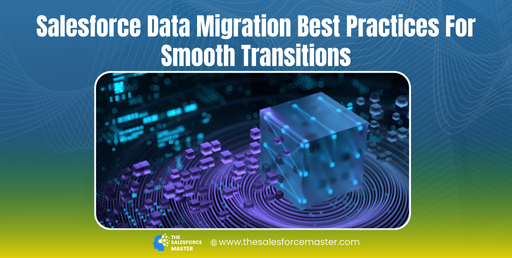
Salesforce Data Migration Best Practices for Smooth Transitions
Data migration is a crucial process for any Salesforce Marketer, ensuring data integrity and operational continuity. A well-executed migration minimizes risks and ensures the data flows seamlessly into Salesforce Login. This guide covers essential practices for smooth data transitions.
1. Plan Thoroughly Before Migration
Effective planning lays the foundation for a successful migration. Start with defining the scope and goals of the project. Conduct a detailed data audit to identify key datasets, data dependencies, and potential issues. Use Salesforce Data Loader to test sample datasets before the full migration. Planning should also include creating a backup of existing data to avoid any loss.
Transitioning data also involves mapping data fields correctly. Ensure all fields in the source system align with Salesforce objects. Collaborate closely with stakeholders to validate data structures and formats. This approach minimizes errors and keeps the project on track.
2. Data Cleansing and Validation
Clean and accurate data is essential for a smooth migration. Data quality directly impacts the functionality of Salesforce Marketing Cloud. Remove duplicate records, correct inaccuracies, and standardize formats before moving data. Salesforce Login’s reporting tools can help identify inconsistencies in the current system.
Validation ensures that migrated data adheres to business rules. Leverage Salesforce’s native validation rules to automate checks post-migration. Use sandbox environments to simulate the migration process and identify errors early. This step guarantees the accuracy and reliability of the final dataset.
Transitioning data in stages rather than all at once also helps with quality control. Conduct frequent tests and reviews to avoid last-minute surprises.

3. Post-Migration Review and Optimization
After the data transfer, a comprehensive review is vital. Conduct thorough data verification to ensure that all records have migrated successfully. Cross-reference data between the old system and Salesforce to confirm accuracy. Salesforce Marketer dashboards provide valuable insights for this comparison.
Engage end-users for validation, as they are familiar with data usage patterns. Train users on navigating the new data environment and updating records through Salesforce Login. Optimizing processes post-migration enhances data utilization.
Monitor data performance regularly using Salesforce reports. Address any discrepancies or performance issues immediately. Continuous monitoring and optimization lead to better long-term outcomes and increased efficiency for Salesforce Marketers.
Conclusion
A well-planned data migration ensures smooth transitions for any Salesforce Marketer. Thorough planning, data cleansing, and post-migration reviews are key. By following these best practices, organizations can ensure that their Salesforce data remains accurate, reliable, and ready to drive business success.


